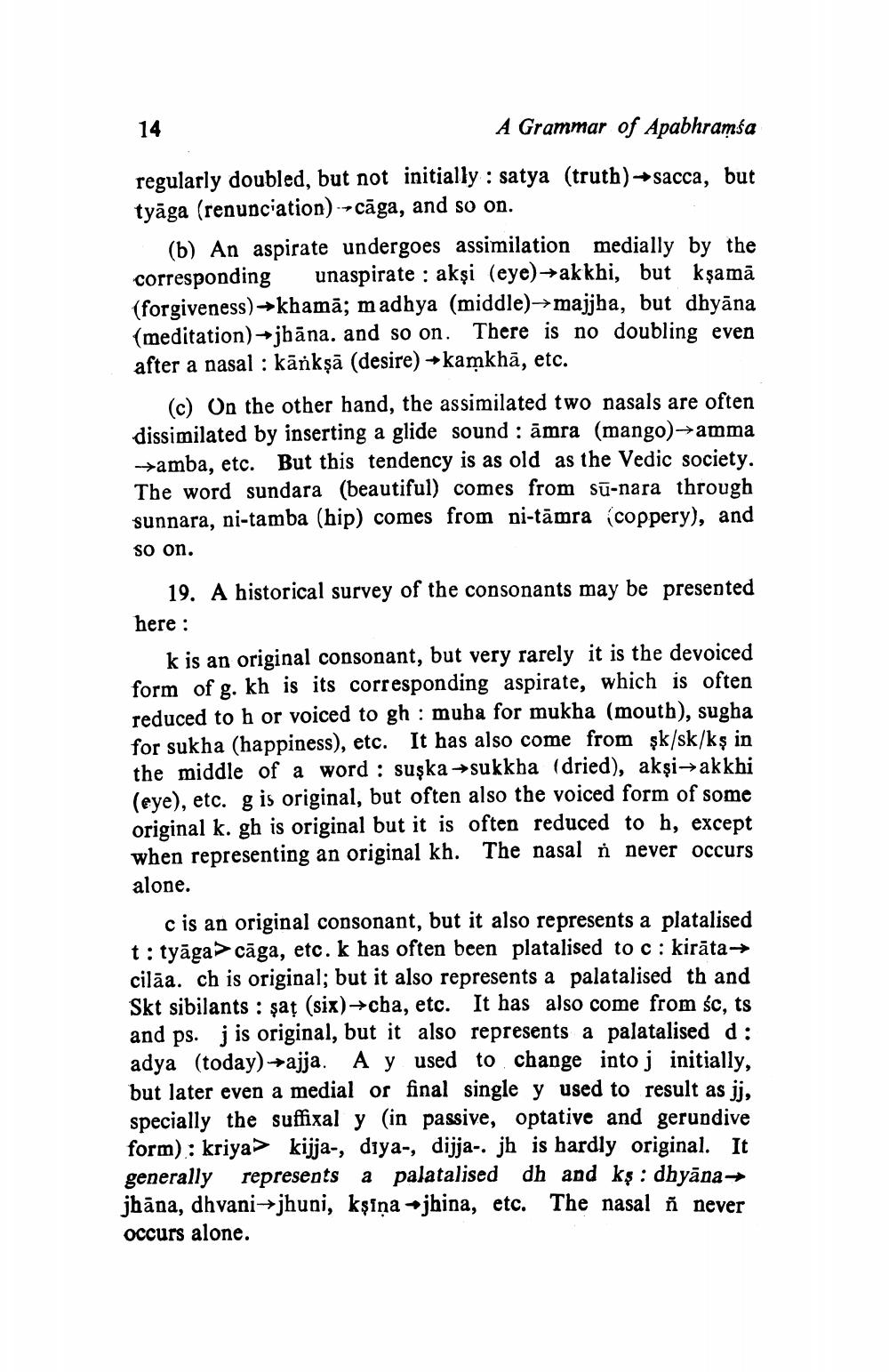________________
A Grammar of Apabhramsa
regularly doubled, but not initially : satya (truth) -sacca, but tyāga (renunciation)--cāga, and so on.
(b) An aspirate undergoes assimilation medially by the corresponding unaspirate : akşi (eye)-akkhi, but kşamā (forgiveness) →khamā; madhya (middle)-majjha, but dhyāna (meditation) -jbāna. and so on. There is no doubling even after a nasal : kāňkşā (desire) → kamkhā, etc.
(c) On the other hand, the assimilated two nasals are often dissimilated by inserting a glide sound : āmra (mango)→amma
+amba, etc. But this tendency is as old as the Vedic society. The word sundara (beautiful) comes from sū-nara through sunnara, ni-tamba (hip) comes from ni-tāmra (coppery), and so on.
19. A historical survey of the consonants may be presented here :
k is an original consonant, but very rarely it is the devoiced form of g. kh is its corresponding aspirate, which is often reduced to h or voiced to gh: muha for mukha (mouth), sugha for sukha (happiness), etc. It has also come from şk/sk/kş in the middle of a word : suska-sukkha (dried), aksi-akkhi (eye), etc. g is original, but often also the voiced form of some original k. gh is original but it is often reduced to h, except when representing an original kh. The nasal å never occurs alone.
cis an original consonant, but it also represents a platalised t: tyāga>cāga, etc. k has often been platalised to c: kirāta → cilāa. ch is original; but it also represents a palatalised th and Skt sibilants : şaț (six)+cha, etc. It has also come from sc, ts and ps. j is original, but it also represents a palatalised d: adya (today) -ajja. A y used to change into j initially, but later even a medial or final single y used to result as jj, specially the suffixal y (in passive, optative and gerundive form): kriya kijja-, diya-, dijja-. jh is hardly original. It generally represents a palatalised dh and ks : dhyāna— jhāna, dhvani-jhuni, kşiņa -jbina, etc. The nasal ñ never occurs alone.




